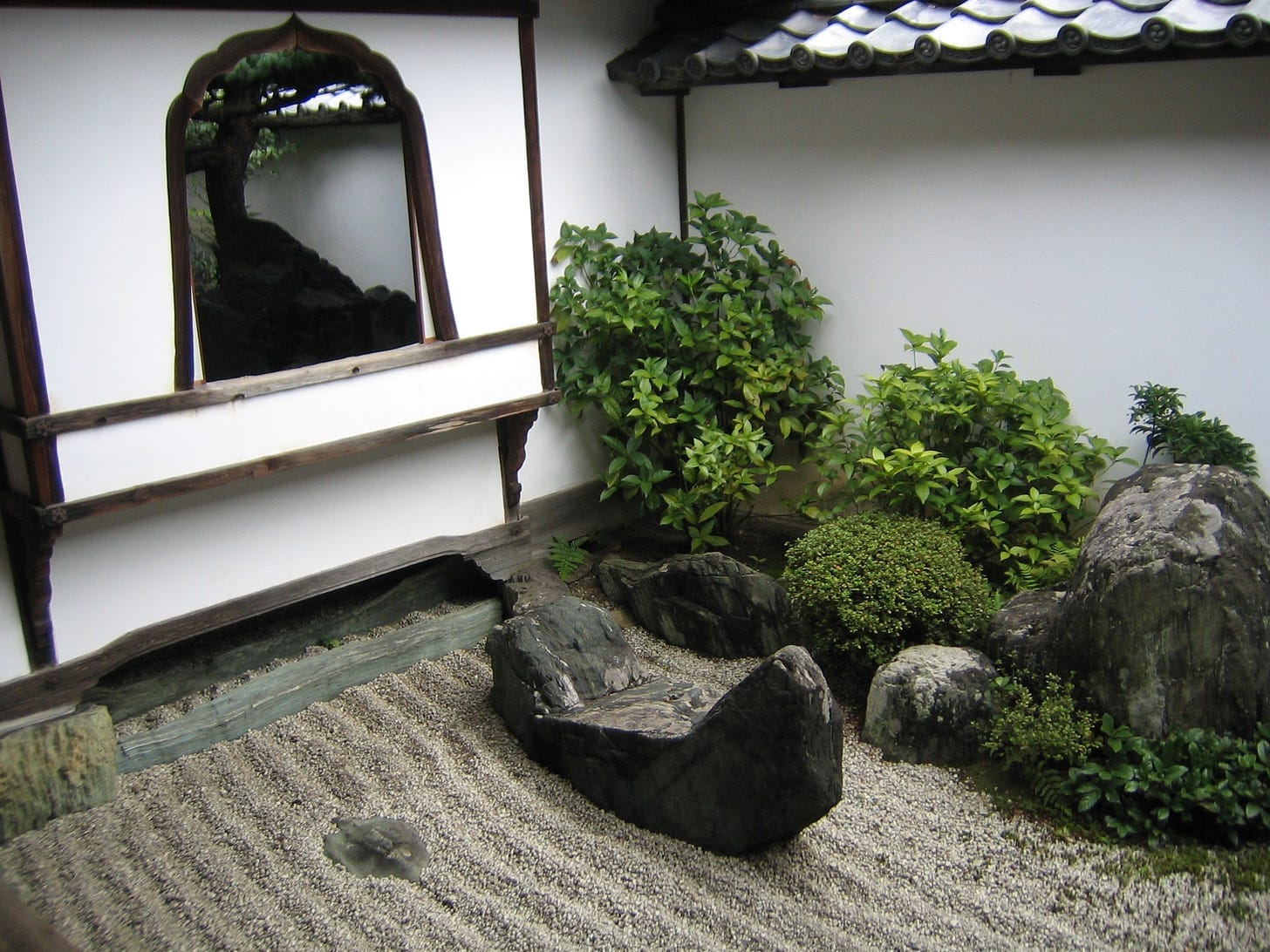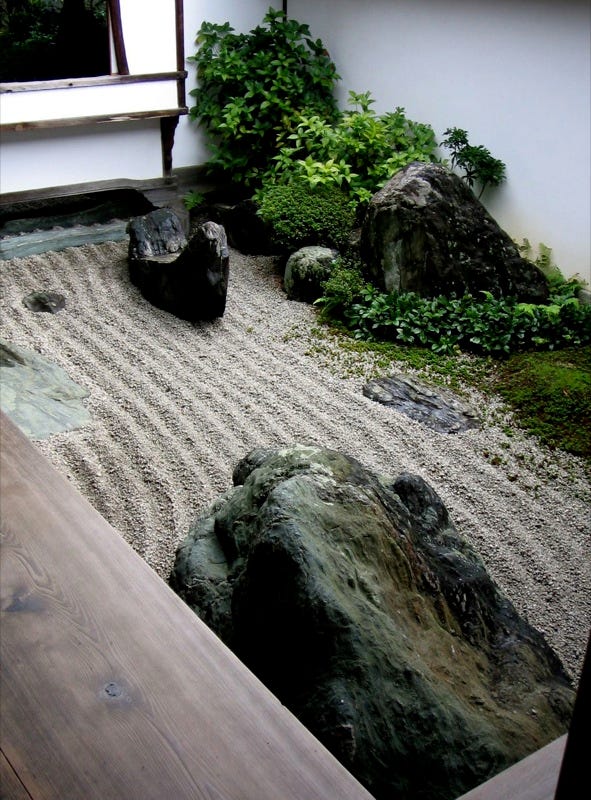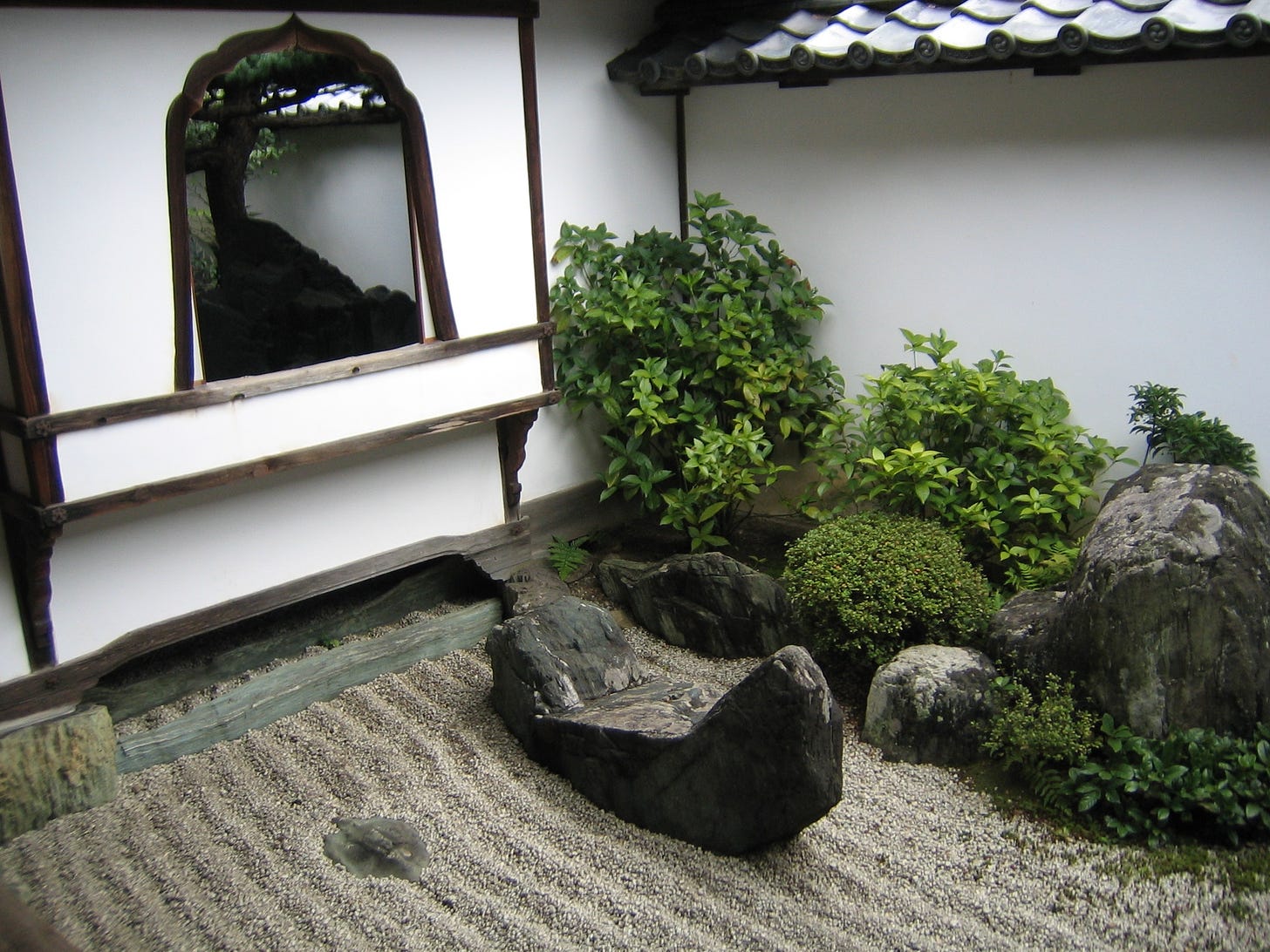Be a boat - A zen philosophy to navigate the currents in life

Go with the flow—Life lessons from my dogAbout a year ago, I embarked on a project to write a book. The book is about the lessons I learned from my dog, Spock. It is about how the lives of animals offer profound lessons that mirror ones from philosophy and ones you arrive at in meditation. However, I’ve been stuck because I couldn’t find the right voice. A chance conversation with another author helped me unlock it. He told me to write it as a conversation between friends. This resonated because the idea for the book started with a similar discussion with a friend (“RD”).
I am putting a chapter out here to see if the tone of voice works.
Thanks for reading Product & Flow! Subscribe for free to receive new posts and support my work.
Subscribed
Introduction
Change is the only constant in life. We've all heard it.
Embrace change. We've all heard it.
Tackle hard things. We've all heard it.
However, every philosophy seems to make life harder.
Is there an underlying philosophy to navigating life?
Something that makes life seem effortless and joyful?
My philosophy in life was to take really hard things and go at them. Sure, life seemed a struggle, but "Isn't the obstacle the path?" I recently talked to a friend who espoused the same belief while expressing how hard things were—oh, the irony!
When I visited a Zen temple in Kyoto, I realized there was another way.
Picking the conversation back up with my friend RD.
HS: I have also marveled at Spock's innate ability to handle change and navigate life. He made it look so effortless.
RD: How so? When I think of dogs or animals, I don't think they have a choice, or do they? Change is forced on them through external agents. They are just surviving life—aren't they?
HS: Not quite. There is this beautiful innate ability to navigate life that humans have lost sight of because we make life complicated.
Let me illustrate with a zen metaphor.
I learned of this metaphor in Kyoto, and it changed how I thought about living life. When I contemplated it, I realized that Spock exemplified living this way.
There are many temple complexes in Kyoto, and one of my favorites is the Daitokuji temple complex. The Daitokuji complex has a series of temples and rock gardens. Nestled within the serene confines of the Daitokuji temple complex lies Daisen-in, a small temple. The karesansui, or dry landscape rock garden, is an absolute masterpiece of Japanese Zen garden design from the early 16th century.
It's a place where Zen monks have contemplated the profound mysteries of existence.
When I first heard the metaphor of this particular garden, I thought, "Well, they didn't have anything better to do than labeling stones with some meaning." But the labels and metaphors didn't leave me, and luckily, I was forced to internalize them.
RD: Alright, let's hear it. As you speak of this deep metaphor, how about a cup of chai?
HS: Sounds good.
About 10 minutes later...
HS: Let's lay out the setting, which symbolizes the stages in a human life. I called it the setting for the game of life.
Setting for the game of life
Visualize a garden made of rocks and laid out in a rectangle from left to right. The garden's beauty is that it is all rock, and the monks have given each rock a symbolic representation. Thus, the river, the waterfall, and the animals are all rocks.

At the extreme left is a mound with some rocks in front of it—picture the mound as a mountain from which a beautiful waterfall falls on those rocks. The waterfall turns into a river and moves to the end of the garden.
This left-to-right movement of the river signifies a human life moving from the source until it meets its ultimate destination.
The Early Struggles and Foundations
The journey begins with a group of seemingly haphazard but deeply symbolic rocks. These formations represent the early struggles and challenges we face in life. Just as these rocks withstand the elements, we, too, learn to weather life's trials. This stage is about building a solid foundation and developing resilience and character. It's a reminder that the difficulties we encounter are not mere obstacles but stepping stones to a more profound understanding of life.
The Window of Transition
As you move through the garden, a window marks a distinct transition, symbolizing the passage from the formative years into the next phase of life. This literal and metaphorical window offers a new perspective and a different light. It draws a line between youth and maturity, between learning from the world and understanding it.
The River of Life
The river, depicted by raked gravel, is central to the garden's narrative. This river is the flow of life, moving inexorably from birth towards death, its ultimate goal being enlightenment. The river's course reminds us of life's transient nature, its constant motion, and the inevitability of change. It's a call to embrace the journey, with all its twists and turns, as the path to wisdom.
Buddha at the end of the garden
The Buddha on the extreme right in the garden signifies the end of life or enlightenment.
Playing the game of life
The monks have mentally marked three key rocks. Two are animals—a turtle and a cow—and one is a boat. The animal species don't signify a whole lot; they just remind you of a turtle and a cow (if you really look hard—playful monks at play here).
The approach that these entities take defines the approach that one can take in life.
The Turtle: A life of struggle
Amidst this flowing river, a formation resembling a turtle appears to swim upstream, symbolizing the human tendency to struggle against life's natural flow.
The turtle's upstream battle poignantly reminds us of our often futile efforts to resist change, to fight against the currents of life instead of embracing them. This struggle, while natural, often leads to unnecessary hardship and suffering.
HS: I was a turtle before I came across this metaphor. I used to proudly think that I like to do "really hard things", and would go out of my way to court really hard things. Each day, tackling these giant goals was a challenge.
RD: Well, isn't doing hard things good? How is one supposed to grow if one doesn't take on hard challenges?
HS: That's a fair point and one that we constantly see in the Western consciousness, which is why I think most of the Western world are turtles. The key lesson here is not recognizing whether you are beating your head against a wall doing something that isn't fun or doing something that you truly love.
For example, I hate running, but nevertheless, I signed up for a marathon—it was absolute misery, but I did it because "hey, I liked to do hard things."
The point is that you should avoid picking something that feels like a struggle and that you don't quite enjoy. You should also avoid choosing something that doesn't represent your true nature.
RD: Sounds about right. There is a lot of wisdom in it.
The Cow: Living in the Past
HS: Opposite the turtle, a cow-shaped formation looks towards the garden's beginning. This represents the human inclination to gaze back at the past, sometimes with nostalgia, other times with regret.
The cow's backward glance is a metaphor for our own preoccupation with what has been. Dwelling on the past signifies a natural human tendency, but one that can keep us from fully experiencing the present and moving forward.
While the turtle experiences misery by choosing things that don't represent us, the cow signifies another kind of misery: one in which we never fully live the present and waste it for the past.
The Boat: Acceptance of the flow of life
Finally, the most profound lesson of Daisen-in's garden is embodied in the boat-shaped rock. The boat goes with the flow of life. It is aware of the current and the wind; it accepts these elements that it cannot control while skillfully and effortlessly harnessing them and moving downstream. Unlike the struggling turtle or the backward-looking cow, the boat moves with the current. It represents a life lived in harmony with the way of things, a life that understands the wisdom of adaptation and acceptance.
This boat is not just a passive vessel; it requires a navigator. It's a call to take charge of our journey, to steer mindfully through life's waters, making conscious choices while accepting the uncontrollable forces around us. It's a balance of effort and surrender, doing and being, shaping our destiny while accepting life's unfolding mystery.

Spock's living: The boat effortlessly sailing through life
HS: As I think about this allegory, it is clear that Spock embodied the boat.
RD: Now that I think of it, it reminds me of the serenity prayer
God, grant me the serenity to accept the things I cannot change, the courage to change the things I can, and the wisdom to know the difference
HS: Indeed.
RD: So tell me, how did this boat metaphor manifest in Spock's life?
HS: It is hard to find significant instances, but if you saw him living life day-to-day, you would instantly recognize it.
HS: Let me think more about moving with the current of life by "acceptance."
Acceptance
(After a few moments...)
HS: Too often, people say dogs will do anything to avoid pain. It is valid to an extent, but there is more to it.
Throughout his life, Spock exemplified a remarkable level of resilience, especially in the face of severe pain, especially during his later years.
He had a couple of knee surgeries; the doctor botched the first one, and thus, he had to go through another one to fix the first one, and both were very painful. Spock's spirit remained unbroken. Post-surgery, he insisted on walking out to the bathroom by himself, hobbling with dignity rather than showing any sign of weakness, and our doctor was amazed by this behavior (and other similar ones) and thought of him as a reasonably atypical dog.
Months after the first surgery, Spock lived each day with as much zest as he always had, even in visible discomfort. He continued to chase squirrels in the playground, running with a mix of eagerness and pain. He had calibrated what he was capable of, and his squirrel-chasing jumps had mentally worked in the limitations.
He found a way to accept the pain and find happiness in his everyday activities despite the pain. Something that a lot of humans struggle with.
Avoidance
HS: However, there was a Rubicon line beyond which he wouldn't go. A series of instances that are seared in my brain are his decisions around avoiding tough emotional challenges.
RD: What do you mean?
HS: If you remember, he was very close to my mother-in-law. For about ten years, he would wait for her to come back from her dialysis routine and sit with her as she recovered from the intense procedure. Her routine was thrice a week, and he did that thrice a week. In addition, he spent a lot of other time with her in the room.
Once she passed away (in a hospital and not at home), he refused to enter her bedroom. It always amazed me to see how he concluded that he was never going to see her again after seeing the 911 medics take my mother-in-law to the hospital.
After that day, he never entered that room again by himself. It took him months before he would enter the room again, and only if my wife or I were in it. He would be eager to remove himself from that environment even in that event.
It was as if the pain was too much for him to bear.
Some battles are better not picked.
In other words, if you are on the boat and see a lot of rocks in the water ahead, the smart thing to do is to avoid them.
Summary
This chapter has a relatively simple but profound takeaway.
Sit back, think about the Daisen-in garden, and see what entity you are as you navigate life.
If you are anything other than the boat, it is probably time to re-think your approach to life.